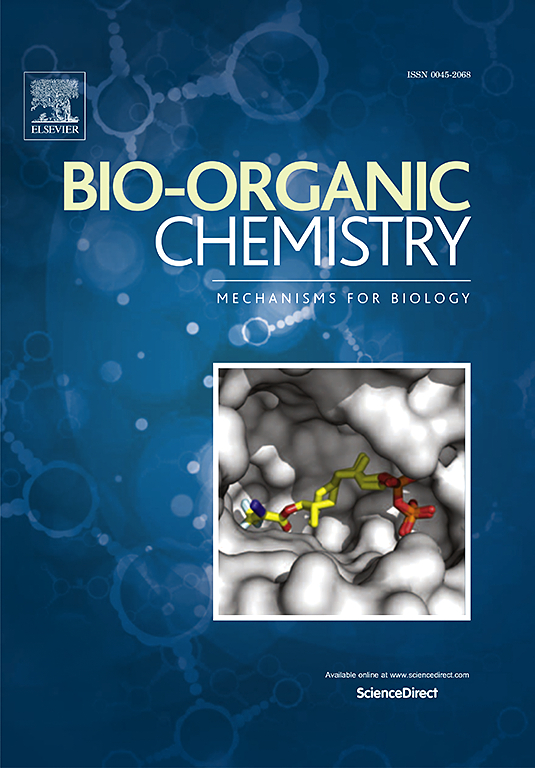Insights into curcumin’s anticancer activity in pancreatic ductal adenocarcinoma: Experimental and computational evidence targeting HRAS, CCND1, EGFR and AKT1
IF 4.5
2区 医学
Q1 BIOCHEMISTRY & MOLECULAR BIOLOGY
引用次数: 0
Abstract
Purpose
Curcumin, as a natural polyphenolic compound, possesses antitumor, antioxidant properties and anti-inflammatory. Pancreatic ductal adenocarcinoma (PDAC) is a highly malignant tumor, and there is a lack of molecular mechanisms and therapeutic options regarding relevant therapeutic agents. Therefore, we investigated the mechanism of curcumin inhibiting pancreatic cancer growth by modulating proliferation of cells and cellular metabolism.
Methods
Bioinformatics analysis was involved in analyzing the intersecting targets of curcumin and pancreatic ductal adenocarcinoma. The effect of curcumin on proliferation of PANC-1 cells was tested by CCK-8, and total RNA from PANC-1 was also analysed by transcriptome sequencing. Molecular docking was involved in verifying binding stability of curcumin to protein targets. Molecular dynamics simulated and evaluated binding free energy, hydrogen bonds and root mean square fluctuation of the complex.
Results
PPI, GO and KEGG were involved in screening and analysing key interacting protein targets. 40 μg/mL curcumin significantly inhibited the growth and proliferation of PANC-1. Transcriptome sequencing results showed gene expression of Cyclin D1 (CCND1), AKT serine/threonine kinase 1 (AKT1), HRas proto-oncogene (HRAS), epidermal growth factor receptor (EGFR) was significantly down-regulated by curcumin treatment. Result of molecular dynamics and molecular docking inhibited the free binding energies of CCND1/Curcumin, HRAS/Curcumin, AKT1/Curcumin and EGFR/Curcumin were −21.13 ± 3.41 kcal/mol, −21.84 ± 4.38 kcal/mol, −20.61 ± 1.82 kcal/mol and −27.37 ± 1.94 kcal/mol, respectively.
Conclusion
We found curcumin may not only regulate cell cycle progression in PDAC and apoptosis by down-regulating HRAS, thereby inhibiting CCND1 and its downstream signaling pathways, but also inhibit energy metabolism reprogramming, Ras-RAF-MEK-ERK and other downstream signalling pathways by down-regulating EGFR and AKT1, thereby affecting tumor cell metastasis, survival and proliferation.

求助全文
约1分钟内获得全文
求助全文
来源期刊

Bioorganic Chemistry
生物-生化与分子生物学
CiteScore
9.70
自引率
3.90%
发文量
679
审稿时长
31 days
期刊介绍:
Bioorganic Chemistry publishes research that addresses biological questions at the molecular level, using organic chemistry and principles of physical organic chemistry. The scope of the journal covers a range of topics at the organic chemistry-biology interface, including: enzyme catalysis, biotransformation and enzyme inhibition; nucleic acids chemistry; medicinal chemistry; natural product chemistry, natural product synthesis and natural product biosynthesis; antimicrobial agents; lipid and peptide chemistry; biophysical chemistry; biological probes; bio-orthogonal chemistry and biomimetic chemistry.
For manuscripts dealing with synthetic bioactive compounds, the Journal requires that the molecular target of the compounds described must be known, and must be demonstrated experimentally in the manuscript. For studies involving natural products, if the molecular target is unknown, some data beyond simple cell-based toxicity studies to provide insight into the mechanism of action is required. Studies supported by molecular docking are welcome, but must be supported by experimental data. The Journal does not consider manuscripts that are purely theoretical or computational in nature.
The Journal publishes regular articles, short communications and reviews. Reviews are normally invited by Editors or Editorial Board members. Authors of unsolicited reviews should first contact an Editor or Editorial Board member to determine whether the proposed article is within the scope of the Journal.
 求助内容:
求助内容: 应助结果提醒方式:
应助结果提醒方式:


